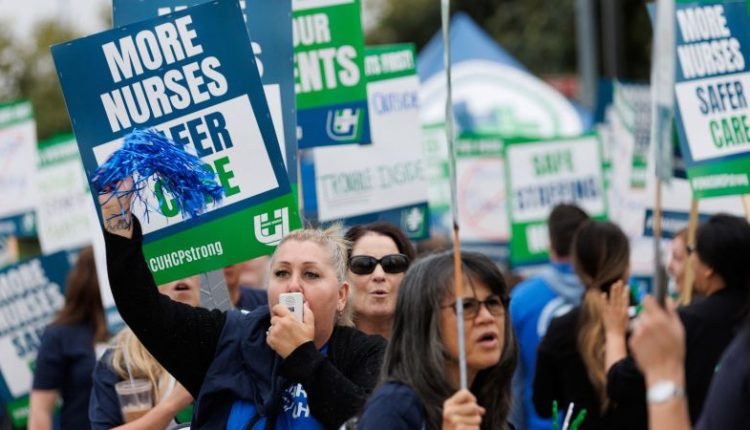Union workers reach a tentative deal with Kaiser Permanente after the largest-ever US health care strike
Kaiser Permanente reached a tentative deal with the unions representing 75,000 employees, following the largest-ever health care strike in US history.
“The frontline healthcare workers of the Coalition of Kaiser Permanente Unions are excited to have reached a tentative agreement with Kaiser Permanente,” the union coalition said on X. “We are thankful for the instrumental support of Acting US Labor Secretary Julie Su.”
The strike last week lasted only three days, the length of time it had been scheduled to run. But the coalition of unions was threatening an eight-day strike next month with even more workers walking out if a new deal was not reached by October 31.
Details of the deal were not immediately available. The union had been seeking better pay and improved staffing levels at Kaiser hospitals and other facilities.
The union coalition represents 40% of Kaiser Permanente’s non-physician workforce and includes a wide range of medical workers, including EMTs, X-ray technicians, nursing assistants and respiratory care practitioners. It also represents hospital support staff, including maintenance and janitorial staff as well as food services.
Rank-and-file members of the union will get to vote on the tentative labor agreement with their employer. If they vote “no,” another strike could still happen. It is not uncommon in recent years for rank-and-file union members to reject tentative deals reached between union negotiators and management. Nearly 4,000 members of the United Auto Workers union went on strike at Mack Trucks early Monday after membership there overwhelmingly rejected an 11th hour deal reached a week earlier.
Kaiser Permanente is one of the nation’s largest not-for-profit health providers. Unlike a fee-for-service health care model, in which doctors and other providers are paid for each service performed, Kaiser Permanente patients or their employers pay a membership fee to access Kaiser Permanente’s wide range of health care services. According to its website, Kaiser Permanente has 12.7 million members and operates 39 hospitals and 622 medical offices.
The tentative agreement comes during heightened union activity in the United States. And the health care sector has seen much of the strike activity, with unions and their members complaining about pay and staffing shortages impacting the quality of care.
From the start of 2022 through August of this year, the Bureau of Labor Statistics has tracked 42 work stoppages of 1,000 or more strikers. Its count shows a third of those strikes were in the health care industry. That’s up from 24% of major strikes in 2019, the year before the pandemic. The increased number of health care strikes have happened despite health care workers making up only about 9% of private sector union members nationwide.
Read the full article here

